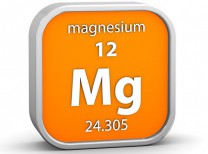The Center for Disease Control (CDC) recently announced that this year’s flu vaccine is not effective against this season’s most prevalent flu strain. While this may be cause for alarm for some as we approach the peak of flu season, I am confident that using other flu prevention tools can be more effective than the flu vaccine.
The flu vaccine, which is recommended annually for everyone older than six months of age, is comprised of the three or four strains of flu most likely to be seen in a given season; however, the flu vaccine tends to not work very well if the strains of flu in the vaccine do not match the strains of flu in the current environment. On the rare occasion that the matching strain is perfect, 1% of flu-vaccinated individuals still end up with an infection, compared to 4% of unvaccinated individuals. In the case of a partial strain match, 1% of individuals still end up with an infection versus 2% of unvaccinated individuals, leaving the true reduction in flu risk a mere 1%. So when the media reports that the risk of getting the flu is cut in half, technically, that’s true because the risk has dropped from 2% to 1%, but what’s really being said is that the absolute risk has been reduced from 2 in 100 to 1 in 100 people.
The flu strain H3N2 appears to be circulating widely this year with enough mutation that our body will view it as an entirely new flu virus. As such, we can expect the vaccine to be largely ineffective. The good news is our bodies are well equipped to tackle new viruses if given a little support. Here are a few suggestions:
Rest is my top recommendation as it is paramount with any viral infection. Adequate sleep and stress reduction are vitally important to the proper functioning of our immune system and will have the most positive impact on your speedy recovery.
Probiotics, taken regularly for at least 6 months, are a safe effective way to reduce fever, runny nose, and cough incidence and duration in children 3 to 5 years of age. Scientists increasingly think that the health and diversity of our own microbiome has a huge influence on our overall health regardless of age.
Vitamin D3 is a powerful role-player in the regulation of our immune system. Low vitamin D levels are associated with greater risk of getting influenza than those with healthy levels. Further, higher levels of vitamin D have been shown to potentially shorten the duration of infection. In one study it was found that for each 4ng/ml increase in vitamin D levels in the body, there was a 7% lower chance of developing influenza.
Zinc supplementation in the form of tablets, lozenges, or syrup, if given at the onset of a viral infection, has been shown to reduce the duration and severity.
So the next time you catch the flu, consider supporting your body’s own innate ability to heal instead of reaching for fever suppressors and antibiotics, which would not be helpful for a virus such as influenza anyway. Yours in health!
Dr. Brian Myers is a naturopathic primary care doctor with a focus on pediatric and family health at Live Well Clinic in La Quinta. For more information visit www.livewellclinic.org or call (760) 771.5970.
Sources: 1) HealthDay. http://consumer.healthday.com/infectious-disease-information-21/flu-news-314/flu-694358.html; 2) Jefferson T, Di Pietrantonj C, Rivetti A, Bawazeer GA, Al-Ansary LA, Ferroni E. (2010). Cochrane Database of Systematic Reviews. 2010 Jul 7; (7):CD001269. Doi: 10.1002/14651858.CD001269.pub4; 3) Leyer G.J., Li S., Mubasher M.E., Reifer C., Ouwehand A.C. (2009) Probiotic Effects on Cold and Influenza-Like Symptom Incidence and Duration in Children. Official Journal of the American Academy of Pediatrics, 124(2), 172-9. doi: 10.1542/peds.2008-2666; 4) Rao G, Rowland K. (2011). PURLs: Zinc for the common cold—not if, but when. The Journal of Family Practice. 2011 Nov;60(11):669-71.; 5) Laaski I, Ruohola JP, Tuohimaa P, et al. An association of serum vitamin D concentrations <40 nmol/L with acute respiratory tract infection in young Finnish men. American Journal of Clinical Nutrition 2007;86:714-717.; 6) Aloia J & Li-Ng M. Re: epidemic influenza and vitamin D. Epidemiology 2007;135(7)1095-6; 7) Urashima M, Segawa T, Okazaki M, et al. Randomized trial of vitamin D supplementation to prevent seasonal influenza A in schoolchildren. American Journal of Clinical Nutrition 2010;91:1255-60.; 8) Berry D, Hesketh K, Power C, et al. Vitamin D status has a linear association with seasonal infections and lung function in British adults. British Journal of Nutrition 2011;106:1433-1440.; 9) Hulisz D. (2003) Efficacy of Zinc Against Common Cold Viruses: An Overview. Journal of American Pharmacist Association. 44(5):594-603











































Comments (0)